Copious color
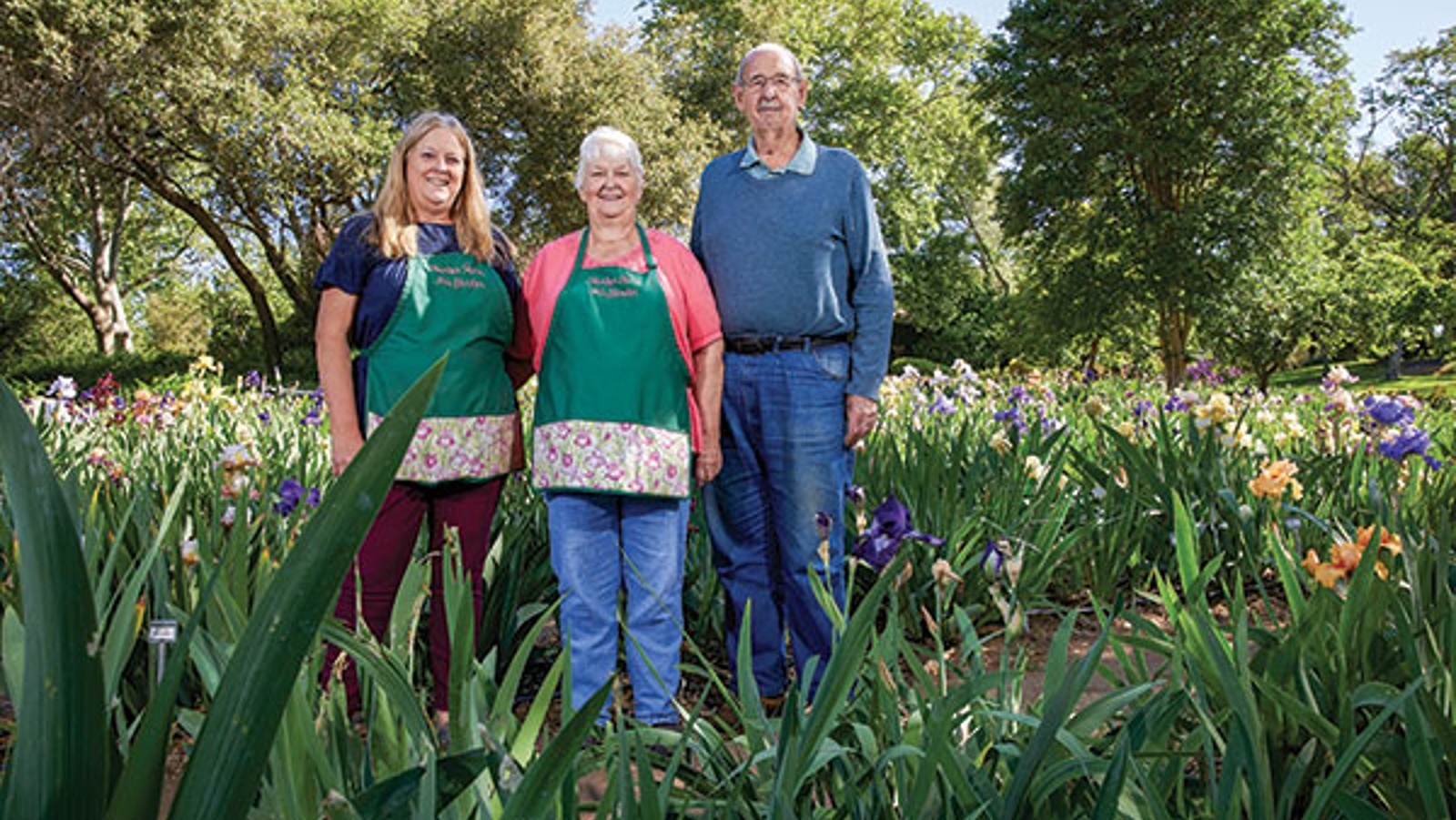
March/April 2022 California Bountiful magazine
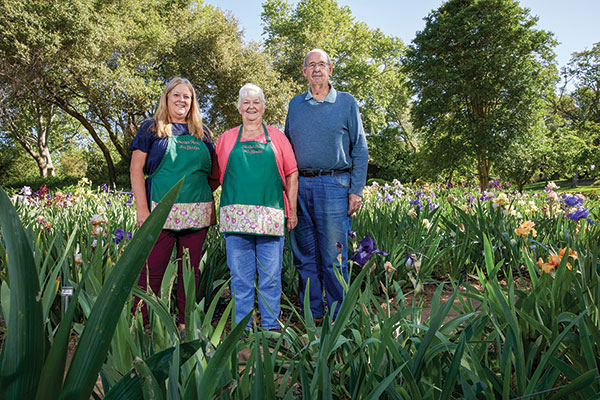
Accidental find on family property leads to thriving iris garden
Story by Pat Rubin
Photos by Fred Greaves
It's a short drive from Interstate 80 to the Horton Iris Garden near the small Placer County town of Loomis. Once you exit the freeway, though, the scenery changes quickly and includes more horses than houses.
Visitors enter the garden via a country driveway that snakes around massive rock outcroppings and past an old farmhouse before spilling out onto large swaths of lawn framing beds of irises. Between them, they house nearly 1,500 varieties of bearded iris (also called German iris), all reaching their peak of bloom during April and May. The names are fun to read: Crackling Caldera, Foggy Morning, Laced Handkerchief, Riverboat Gambler, Waltz Across Texas.
The beds are organized in rows and the irises are clearly labeled. The drill is simple: Order your favorite irises from a Horton family member and then return in August to pick up the rhizomes, which are harvested in July when the plants are dormant. For those who need instant gratification, a small selection of potted irises is available for sale.
Jill Morris of Placerville, who has been coming to the garden for about 15 years, brought three friends with her last spring.
"My friends had never been and I thought it would be a good day trip," she said.
Her cousin, Stacey Vreeken, also from Placerville, bought a mix of old-fashioned and new varieties of irises. "The family members were all there to help and tell us about their history," she said.
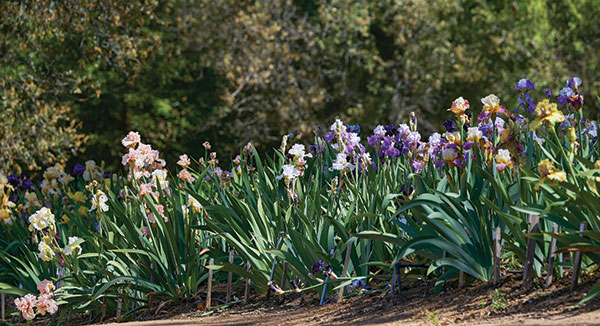
Property's past
Mary Ann Horton, a retired community college math teacher, and her husband, Ed, opened Horton Iris Garden in 1999. It is open in April and May during bloom and then in mid-August through October for order pickup and bareroot rhizomes purchases. In October, the focus shifts to the cut-your-own pumpkin patch, run by Mary Ann's son Doug.
New additions this year are a Harvest Market with vendors, a cut-your-own flower garden, and digging, dividing and planting demonstrations.
The whole Horton family is involved. Ed starts each morning checking the irrigation valves and making sure screens on the water lines are clean. Mary Ann's daughter, Lori Kambe, handles social media, son Doug concentrates on maintenance, while his wife, Jennifer, and Mary Ann's youngest son and wife provide extra help on busy weekends.
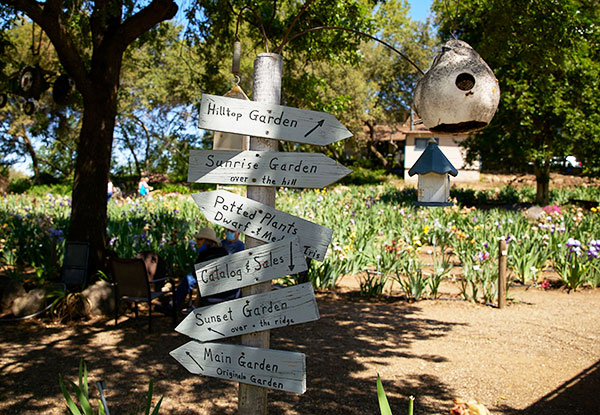
The property, which is the inspiration for the garden, has been in Ed's family since 1857 when his great-grandfather paid Placer County $10 to allow him to settle there and later applied for homestead status for the 240 acres. He raised cattle and mined for gold. In the early 1900s, the family planted fruit orchards and built a shed where they packed grapes, pears, plums and peaches. The land and the farmhouse sat abandoned for many years until Ed began renovating the house in the 1980s. In 1990, he and Mary Ann married and began the formidable task of clearing the overgrown blackberries and weeds.
"When I moved in, the Johnson grass along the sides of the driveway was so high it got caught on the mirrors of my car," Mary Ann recalled. "Ed bought me a riding lawnmower. The grass was higher than the lawnmower."
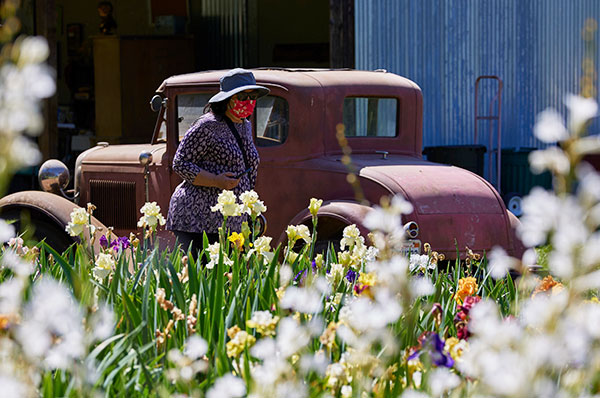
Life-changing discovery
During the cleaning-up process, Mary Ann discovered clumps of old-fashioned irises, as well as beautiful rock outcroppings among the weeds. She created flower beds around the rocks and soon began collecting new and old iris varieties. She visited old farmhouses in the area to look for irises and collected many varieties that would otherwise be lost to cultivation. Some she was able to identify, while the names of others are lost forever. She kept planting and buying irises. Ed jokes that his "Grandma Pearl carried away as many rocks and boulders as she could, but Mary Ann has carried them back, plus more."
Mary Ann knew little about irises when she started and certainly had no inkling that finding those irises in the weeds would change her life.
"My mother had a long row of irises planted when I was growing up," she said. "We didn't know the names of any of them, but I remember how beautiful they were in bloom."
The garden grew and grew, and it wasn't long before Mary Ann opened the garden to friends and visitors. Along the way, she became a certified iris judge and now trains others to judge irises.
The rest, she says, is history.
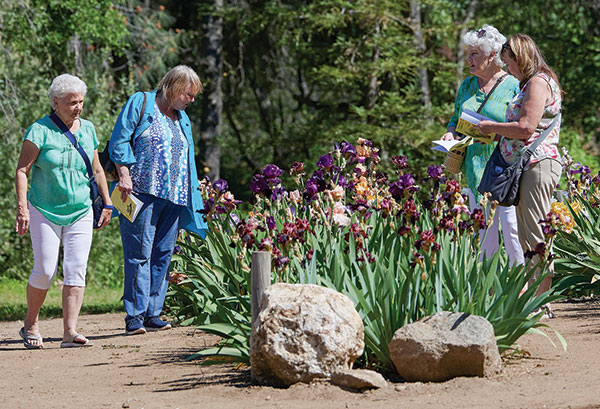
Sharing the beauty
The family doesn't keep track of how many visitors come through each year, but Mary Ann says the parking lot, which can hold about 120 cars, is full, with cars coming and going many weekends, especially around Mother's Day.
"A lot of people come to see the irises but not necessarily to buy," she said. Nevertheless, sales were up about 50 percent last season, which she attributed to enhanced marketing efforts and more people seeking outdoor activities during the pandemic.
Horton Iris Garden is one of a handful of iris gardens still open in California. More have failed than succeeded. Mary Ann attributes her success to customer service and to being organized.
"An iris farm is not something you do to make a lot of money," she said. "It's hard work but it's fun. We are very organized, organized chaos I call it, but organized."
Many visitors ask which iris is her favorite. While there are a few irises she especially loves, she says she can't pick just one.
"My favorite is usually the one I'm looking at as we walk through the garden," she said. "Ask me again as we walk a little farther and I'll have another favorite. I used to tell people I could find a new favorite every 10 feet, but now I say I can only walk about 4 feet before finding another favorite."
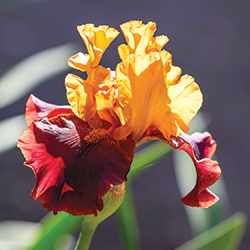
Caring for irises
Irises are tough, resilient plants that don't ask for much more than plenty of sun. Seven hours a day minimum keeps them happy and blooming. The rhizomes like to rest slightly in the ground with their tops exposed to the sun.
When planting, dig out the soil just a tad, lay the rhizome in the depression and press the soil firmly around the sides of the rhizomes. Give them some water. Keep the plants damp but not soggy until they are established.
Once the winter rains begin, stop watering and let Mother Nature do the job. Rule of thumb, Mary Ann Horton says, is it's always better to underwater than to overwater.
Fertilize twice a year (she recommends Valentine's Day and in the fall) with a balanced fertilizer: 10-10-10 or 15-15-15.

